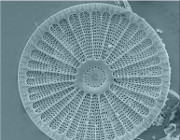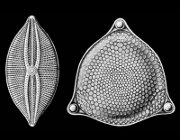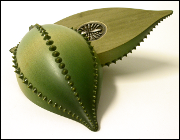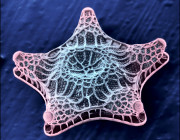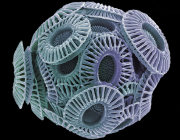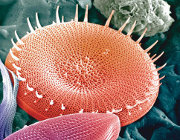Home :: List of Publicly Available Datasets :: Climacostomum Climacostomum virens Stock W-24
Climacostomum Climacostomum virens Stock W-24
Downloads:
| Principle Investigator(s) | Giulio Petroni |
|---|---|
| External sample ID | Climacostomum virens Stock W-24 |
| NCGR Sample ID | MMETSP1397 |
| Sample accession number | CAM_SMPL_003173 |
| Assembly accession number | CAM_ASM_000891 |
| Combined Assembly Name | N/A |
| Genus | Climacostomum |
| Species | Climacostomum virens |
| Strain | Stock W-24 |
| Clonal | Unknown |
| Axenic | No |
| Prelim. NCBI Taxon ID | 49980 |
| 18S rRNA | |
| Importance of organism and transcriptomes | Climacostomum virens (Ehrenberg, 1833) is a non-contractile freshwater heterotrich ciliate which can be easily cultured in laboratory. In the last years, it attracted the interest of researchers of different fields, such as ecology, physiology, ethology, and pharmacology. This ciliate usually contains a symbiotic Chlorella, that can be cultivated also outside its host (Reisser et al., 1984), and in addition it represents the first evidence in ciliates of successful infection of aposymbiotic specimens with algae by microinjections (Karajan et al., 2007). C. virens is currently deeply studied as a model in predator-prey interaction with other protists or microinvertebrates. Its subpellicular ejectable cortical granules (extrusomes) contain a toxic secondary metabolite called climacostol that is mainly used in chemical defense against predators (Miyake et al., 2003). Climacostol belongs to the bioactive resorcinolic lipids family (mainly found in algae and fungi) and represents the first report of these substances in protists. This toxin has been recently chemically synthesized (Masaki et al., 2004; Fiorini et al., 2010) and found to show a different degree of citotoxicity in other ciliates (Buonanno & Ortenzi, 2010). It is shown that its toxicity is probably accomplished by the inhibition of mitochondrial respiration (Muto et al., 2010). In addition it was proved that climacostol can induce a programmed cell death (apoptosis) in human tumor cell lines, with non-tumor cells proving significantly more resistant to it (Buonano et al., 2008; Fiorini et al., 2010). This toxin is also recently studied for its antibiotic properties against some procariotic and fungal pathogens (Petrelli et al., 2012). Taken as a whole, together with these investigations mainly performed in the metabolomic field, a trascriptome of this ciliate will certainly provide new research opportunities for protistologists, physiologists and evolutionary biologists. |
| Additional citations and references | Lynn DH. 2008. The ciliated protozoa. Characterization, classification, and guide to the literature. Germany: Springer, 3rd edition. |
| Environmental Data | |
| Primary citation for organism's characterization, if available | Miyake, A., Buonanno, F., Saltalamacchia, P., Masaki, M.E., Iio, H., 2003. Chemical defence by means of extrusive cortical granules in the heterotrich ciliate Climacostomum virens. Eur. J. Protistol. 39, 25?36 |
| Sample material (e.g. "seawater," "sediment," etc.) | Freshwater |
| ENVO term for habitat - primary term | Aquatic: freshwater |
| Habitat | freshwater habitat |
| Country | RUSSIAN FEDERATION |
| Experimental Data | |
| Date of experiment | 15-DEC-12 |
| Growth medium | freshwater |
| Temperature (ºC) | 19 |
| pH | 8.2 |
| Prey organism, if applicable (genus and species) | bacteria |
| Investigation type | Eukaryotes |

